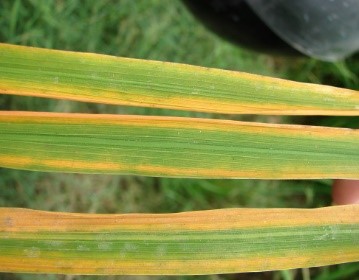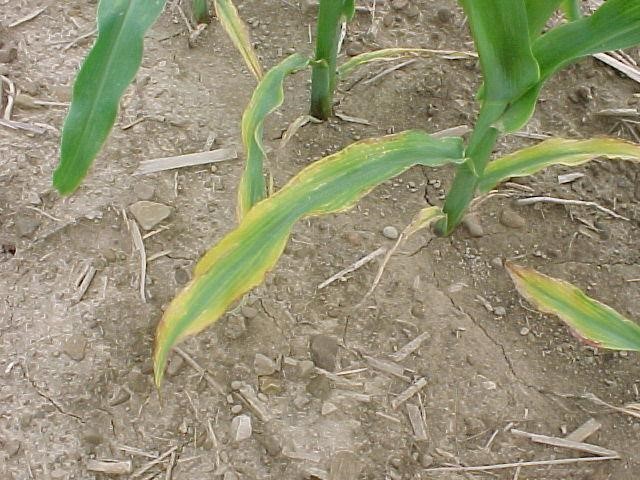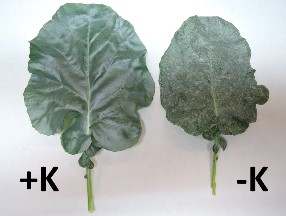
Potassium
Nutrient Benefits
Antagonism
High K levels can reduce the availability of:
- Boron
- Magnesium
Stimulation
Increased K levels can create a demand for more:
- Iron
- Manganese
Functions
- Aids in photosynthesis and the functioning of chlorophyll
- Formation and translocation of starches, sugars, and fats
- Protein formation
- Aids with enzyme actions
- Maintenance of cell internal pressure
- Reduces wilting and respiration by maintaining balance of salts and water in cells
- Improves crop quality
- Increases root growth and resistance to disease and drought
- Decreases lodging
Deficiency Symptoms
- Light green, yellow older leaves which develops into leaf scorch
- Stunted growth
- Lodging
- Reduced disease resistance
- Weakened stalks
- Misshapen seed and fruit
Factors Affecting Availability
- Continuously cropped soils with low levels of organic matter
- Soils without balanced fertilizer programs
- Light, sandy soils where K has been leached
- Periods of drought
- Heavily limed soil
- Prolonged periods of heavy rain in some soils (e.g. Red Ferrosoil)
- Soils in which deficiencies of P and Mo have been corrected
- Soils formed from parent material low in K
Sensitive Crops
Cereals, corn, canola, pulses, beans, peas, sunflowers, potatoes, tomatoes, broccoli, rhubarb, cucurbits, lettuce, apples, berries, citrus, grapes, nuts, passionfruit, stone fruit
TREATMENT OPTIONS
The following OMEX products can assist with addressing and correcting Potassium deficiency:
- K25
- Primer Mn
- Liquid K Xtra with PGR’s
- C3+K
- Nutri-Boost
- Lucky 13
- K50
- CalMax Complete
- Soluble Powders
Visual Guide



